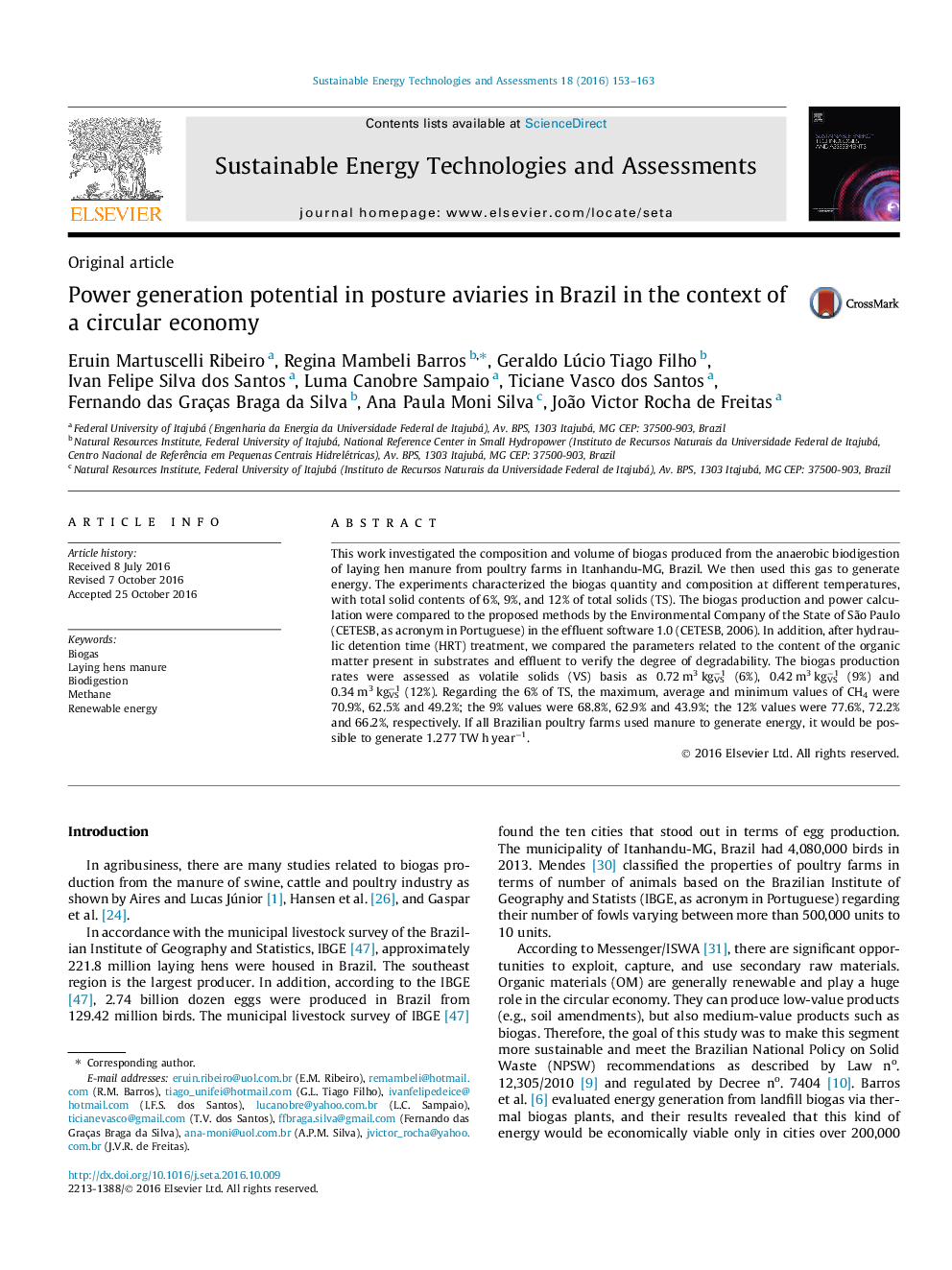| Article ID | Journal | Published Year | Pages | File Type |
|---|---|---|---|---|
| 5483533 | Sustainable Energy Technologies and Assessments | 2016 | 11 Pages |
Abstract
This work investigated the composition and volume of biogas produced from the anaerobic biodigestion of laying hen manure from poultry farms in Itanhandu-MG, Brazil. We then used this gas to generate energy. The experiments characterized the biogas quantity and composition at different temperatures, with total solid contents of 6%, 9%, and 12% of total solids (TS). The biogas production and power calculation were compared to the proposed methods by the Environmental Company of the State of São Paulo (CETESB, as acronym in Portuguese) in the effluent software 1.0 (CETESB, 2006). In addition, after hydraulic detention time (HRT) treatment, we compared the parameters related to the content of the organic matter present in substrates and effluent to verify the degree of degradability. The biogas production rates were assessed as volatile solids (VS) basis as 0.72 m3 kgVSâ1 (6%), 0.42 m3 kgVSâ1 (9%) and 0.34 m3 kgVSâ1 (12%). Regarding the 6% of TS, the maximum, average and minimum values of CH4 were 70.9%, 62.5% and 49.2%; the 9% values were 68.8%, 62.9% and 43.9%; the 12% values were 77.6%, 72.2% and 66.2%, respectively. If all Brazilian poultry farms used manure to generate energy, it would be possible to generate 1.277 TW h yearâ1.
Related Topics
Physical Sciences and Engineering
Energy
Energy Engineering and Power Technology
Authors
Eruin Martuscelli Ribeiro, Regina Mambeli Barros, Geraldo Lúcio Tiago Filho, Ivan Felipe Silva dos Santos, Luma Canobre Sampaio, Ticiane Vasco dos Santos, Fernando das Graças Braga da Silva, Ana Paula Moni Silva, João Victor Rocha de Freitas,
